ZENO'S PARADOX
Zeno's paradox occurs because of phi.
In philosophy, Zeno's paradox supports the idea,
"all is one, and never changes; motion is an illusion."
In order to prove this theory, Zeno did a few mental/mathematical experiments:
THE TORTOISE AND THE HARE (ACHILLES)
The tortoise and the hare are in a footrace.
To try to be fair, the hare allows the tortoise to take a 100 meter head start.
Suppose that each runner is running at a constant speed
(with the hare's speed being much faster than the tortoise's).
After some finite amount of time, the hare will get to the point where the tortoise began (100 meters).
But, during that finite amount of time it took the hare to get there,
the tortoise has run, say, 10 meters (so the tortoise is at 110 meters).
It will then take the hare some other finite amount of time to get to 110 meters;
and during that time, the tortoise has advanced even farther.
And it will take more time still for the hare to reach this third point,
while the tortoise continues to move ahead.
Therefore, whenever the hare gets to a point where the tortoise has already been,
he will always have further to go in order to get ahead.
The tortoise will always hold the lead.
THE DICHOTOMY PARADOX
"That which is in locomotion must arrive at the half-way point before it arrives at the goal."
Suppose you're stranded in the desert and you see ahead of you a water fountain.
Before you can reach it, you must make it halfway there.
But before you can get halfway there, you must make it a quarter of the way there.
Before you can get there, you must make it an eighth of the way there;
before an eighth, a sixteenth; and so on.
This requires you to complete an infinite amount of tasks,
because you can continue to divide in half forever.
Also, another problem is that there is no original distance to run.
[Any initial distance could be divided in half, and therefore,
half of the initial distance would be the initial distance, and so on.]
The initial distance wouldn't be initial after-all.
Hence, the trek to the water fountain can never begin.
 |
| Water Fountain |
Sequence of the above:
ZENO'S CONCLUSION:
Travel over any finite distance can neither be completed nor begun.
All motion must be an illusion.
(It is called the dichotomy because you continue to divide in half,
splitting a distance into two parts.)
THE FIBONACCI SEQUENCE
Zeno's Paradox can also be applied to the Fibonacci sequence.
0+1=1
The Fibonacci Sequence is like this:
0+1=1
1+2=3
2+3=5
3+5=8
5+8=13
8+13=21
and so on...
In order to get to square 1, you must first get to square 2.
To get to square 2, you must first get to square 3.
To get to square 3, you must first get to square 5.
To get to square 5 you must first get to square 8.
To get to square 8 you must first get to square 13.
To get to square 13 you must first get to square 21.
And this can keep going infinitely in either direction.
| F−8 | F−7 | F−6 | F−5 | F−4 | F−3 | F−2 | F−1 | F0 | F1 | F2 | F3 | F4 | F5 | F6 | F7 | F8 |
| −21 | 13 | −8 | 5 | −3 | 2 | −1 | 1 | 0 | 1 | 1 | 2 | 3 | 5 | 8 | 13 | 21 |
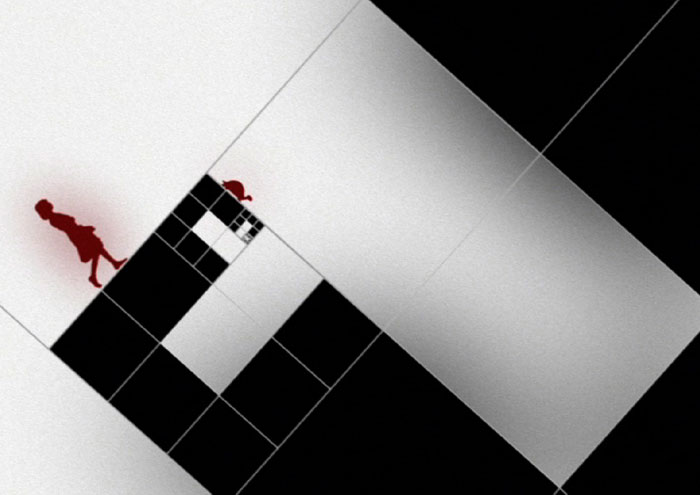 |
How the Fibonacci Sequence Works
Using Pascal's Triangle
Pascal's triangle represents the binomial coefficients in a triangle.
The numbers from Pascal's triangle were known long before Pascal. He was just the first one to organize it, apply it, and publish it (in 1653). Before him, many different cultures around the globe, including India, Persia, China, Germany, and Italy studied the numbers.
Click HERE for the full history of Pascal's Triangle
STEP 1:
When adding all the digits in a single row,
each successive row has twice the value of the row before it.
Here is the formula for that: (the power that 2 is raised to represents the row #):
We must start with row #0, so 2 raised to the 0th power=1
{any number raised to the 0th power=1}
2 to the 0th power represents row 0
2 to the 1st power represents row 1
2 to the 2nd power represents row 2
and so on....
STEP 2:
To get all the numbers in between,
each number in the triangle is the sum of the two numbers above it.
If there are not two numbers above it, substitute a 0 in their place.
We have 1's bordering the pyramid because the 0th element of every row is 1.
If the 1st element of a row is a prime number, all numbers in that row will be divisible by it (ex: row 7)
1
1.1
1.2.1
1.3.3.1
1.4.6.4.1
1.5.10.10.5.1
1.6.15.20.15.6.1
1.7.21.35.35.21.7.1
1.8.28.56.70.56.28.8.1
1.9.36.84.126.126.84.36.9.1
1.10.45.120.210.252.210.120.45.10.1
1.11.55.165.330.462.462.330.165.55.11.1
1.12.66.220.495.792.924.792.495.220.66.12.1
1.13.78.186.715.1287.1716.1716.1287.715.186.78.13.1
1+7+28+84+210+462+924 = 1716
1+6+21+56 = 84
1+12 = 13
Creating this 'hockey stick' shaped figure will always result in the pattern above.
This is just one of the many unique properties of the triangle.
THE REASON WHY THE NUMBER "11" IS SIGNIFICANT:
Row # | Formula | = | Multi-Digit number | Actual Row |
Row 0 | 110 | = | 1 | 1 |
Row 1 | 111 | = | 11 | 1 1 |
Row 2 | 112 | = | 121 | 1 2 1 |
Row 3 | 113 | = | 1331 | 1 3 3 1 |
Row 4 | 114 | = | 14641 | 1 4 6 4 1 |
Row 5 | 115 | = | 161051 | 1 5 10 10 5 1 |
Row 6 | 116 | = | 1771561 | 1 6 15 20 15 6 1 |
Row 7 | 117 | = | 19487171 | 1 7 21 35 35 21 7 1 |
Row 8 | 118 | = | 214358881 | 1 8 28 56 70 56 28 8 1 |
(ex: 1,/ 5,/ 10,/ 10,/ 5,/ 1 translates to 1,/ 5+1,/ 0+1,/ 0,/ 5,/ 1
ex: 1,/ 6,/ 15,/ 20,/ 15,/ 6,/ 1 translates to 1,/ 6+1,/ 5+2,/ 0+1,/ 5,/ 6,/ 1
etc.)
Below, the Orange Color Shows The Fibonacci Sequence
Pascal's Triangle can also be turned into a 3-dimensional representation:
 |
| Pascal's Tetrahedron |
This 3-dimensional figure is the golden mean (phi, fibonacci sequence).
 |
| HURRICANE IRENE |
CLICK HERE TO SEE HOW POPULATION DISTRIBUTION
CORRELATES TO FIBONACCI SPIRALS ON EARTH
THE DA VINCI CODE:




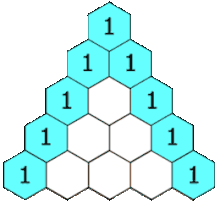

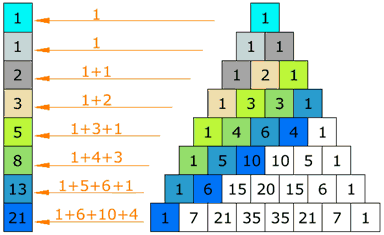



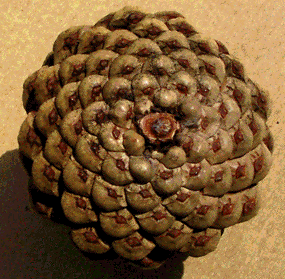
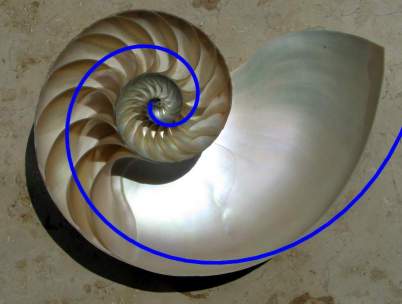








No comments:
Post a Comment